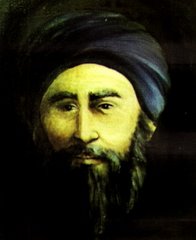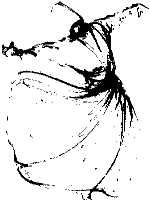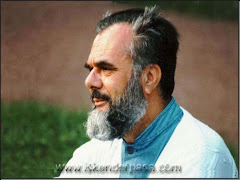Last week, the NSW Parliament played host to a conference on the difficult subject of The Journalist and Islam. The conference ran over 2 days.
The first speakers included Tom Switzer from the News Limited broadsheet The Australian. Switzer defended The Oz’s reporting of 3 issues pertaining to what he described as “the Muslim question” – Hilaly, the Cronulla riots and the anti-terror laws. In relation to Hilaly, Switzer repeated almost word-for-word the criticisms of myself he made here. His criticisms didn’t go as far as the hysterical lynching I received in his paper’s editorial yesterday.
In question time, Switzer was asked to define three terms he frequently used – the “Muslim question” (a re-hash of Nazi Europe ’s obsession with the “Jewish question”?), the “Muslim community” and “Muslim clerics”. Switzer acknowledged diversity within Australia ’s Muslims, but mistakenly claimed that a Muslim cleric has the same authority and role as a Catholic priest.
Melbourne journalist and academic Nasya Bahfen dealt with how lazy journalists manufacture stories from internet forums. She castigated Luke McIlveen’s manufacturing of a story alleging Iktimal Hage-Ali is the subject of an organised vilification campaign. Instead of talking to Muslim critics of Hage-Ali, McIlveen lazily relied on infantile comments left on the Muslim Village forums by anonymous persons probably too young to vote.
(Presumably McIlveen won’t be doing a future story about hate-speech at this blog.)
Vic Alhadeff from the Jewish Board of Deputies made a brave presentation on anti-Semitism in (often government-controlled) media of Muslim-majority states. He certainly opened up my eyes to this scourge of anti-semitism which has been exposed even by prominent Muslims.
Alhadeff hardly mentioned Israel or Palestine during his presentation. That didn’t stop some people from asking him to explain the actions and attitudes of Israelis. When I criticise Western media for their anti-Muslim bias, I’d be insulted if people turned around asking me to explain the actions of al-Qaida and the Taliban. Surely some supporters of the Palestinian and Lebanese causes could relate to this and not have treated Alhadeff so shabbily.
The second day of the conference saw two contrasting conservative approaches to Islam.
Health Minister and former journalist Tony Abbott reminded us that for over a half a century, Catholicism had been the officially despised faith in Australia .
When asked in question time what Muslims could learn from Catholic experiences, Abbott admitted that he saw little violent anti-Catholic prejudice. Abbott said Muslims needed to understand that, while group defamation is easy, Australians find it difficult to demonise their neighbour or workmate.
Further, Catholics and Protestants were forced to share nation-building tasks. Muslims could overcome group defamation by simply getting on with mainstream life. Abbott said the presence of prominent Muslims like John Ilhan, Hazem ElMasry and Ahmed Fahour would assist in this process.
Both Abbott’s parents were converts, which perhaps might explain the overt fervour in his faith. It also explains why Abbott is more respectful to Islam and more sympathetic to the current Muslim experience in Australia . Abbott knows what it is like to be pilloried in the media for holding unfashionable religious beliefs.
Janet Albrechtsen showed little of that empathy, choosing instead to lecture her audience on the alleged clash between “conservative and radical Islam” and “Western modernity”.
Albrechtsen’s precise views on Islam as a mainstream religion were difficult to gauge. On the one hand, she acknowledged that terrorists had hijacked Islam, an assessment few Muslims would argue with. On the other, she called for Muslims to adopt the approach of allegedly “moderate” Muslims like Ayaan Hirsi Ali and Wafa Sultan, both of whom had openly renounced their faith.
Albrechtsen described Hilaly’s views as part of the Islamist attack on the West, similar to that of extremist groups in Europe . When further probed, she admitted Hilaly’s views posed no security threat and that he had no known links to terrorist groups or ideologies. She therefore contradicted the views of others expressed in The Oz.
After skirting around various questions, Albrechtsen finally described the struggle as not one between Islam and the West but rather an internal Muslim struggle for “the soul of Islam”. Yet she could not define exactly what this soul was. When asked to define “moderate Muslim”, the best she came up with was “someone who comes to terms with liberal democracy”.
Not very convincing.
© Irfan Yusuf 2006










